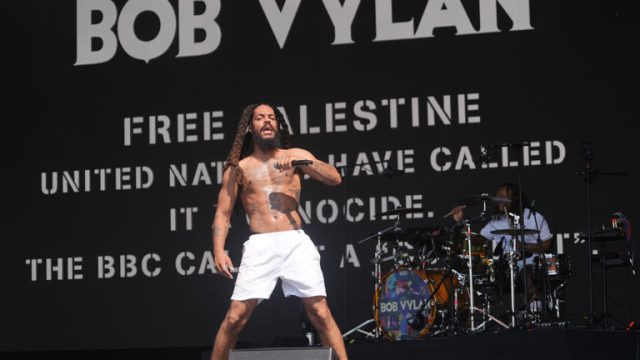Fault Lines of a Global War
Vote To Influence Outcomes
You must be logged in to rate.
Listing Objective
Core Information
Could Conflict Spark World War III?
Whispers of a Global Conflagration
As the Ukraine-Russia war grinds into its third year, questions that once seemed unthinkable now echo in policy circles and public discourse alike: Could this conflict trigger World War III? Is the world drifting, again, toward a catastrophic, system-wide war, only this time with the threat of nuclear escalation and AI-enhanced destruction? These are not speculative musings. They are urgent reflections on a world order under stress.
This article does not forecast doom, but maps out credible fault lines that, if left unaddressed, could lead us into a global conflict. And just as importantly, it considers what ordinary people can do to reclaim agency in a world driven by elite militarism.
1. The Architecture of War: Echoes of 1914
Before World War I, Europe was entangled in overlapping alliances, economic competition, and nationalist fervour. The assassination of one man triggered a war that killed millions. Today, NATO and Russia sit on opposite sides of an expanding fault line, with proxy dynamics entangling the U.S., China, Iran, and beyond.
Small sparks—like an errant missile, a cyberattack misattributed, or a false flag operation—could ignite massive escalation.
2. The Nuclear Wildcard
Russia has made multiple veiled nuclear threats since the invasion began. While many dismiss these as bluster, the very normalisation of nuclear rhetoric erodes deterrence norms.
In a high-stakes miscommunication or a cornered state response, tactical nuclear weapons could be deployed. From there, escalation becomes unpredictable.
3. The Expanding War Map
Ukraine may be the epicentre, but the tremors are global:
>>> Taiwan Strait: China watches Ukraine closely, calculating its timing for potential action against Taiwan.
>>> Middle East: Israel-Iran tensions are intensifying, with proxy battles in Syria and Lebanon.
>>> The Balkans: Fragile peace in Kosovo and Bosnia is again under strain.
>>> Africa: Wagner-backed conflicts in Mali and Sudan indirectly connect to Russian influence networks.
The world is a geopolitical tinderbox. Ukraine is just one lit match.
4. Economic Warfare as Prelude to Combat
Sanctions, energy wars, and commodity manipulation mirror pre-conflict tensions from the 1930s.
>>> Russia’s exclusion from SWIFT and Western financial systems mirrors economic isolationism.
>>> The Global South is forming new economic alignments (BRICS+), weakening traditional Western hegemony.
Wars rarely start with bullets anymore. They start with banks.
5. Tech, Cyber, and AI Escalation
Modern warfare is being reshaped by AI-guided drones, cyberattacks on infrastructure, and disinformation campaigns. The first “strike” in a future war could be a mass power outage, a market collapse, or a deepfake assassination.
These tools lower the threshold for conflict and obscure accountability, making retaliation more likely.
6. Breakdown of Diplomacy and Law
Arms control treaties like INF and Open Skies are dead. The UN Security Council is paralysed. Leaders hold summits, but few engage in meaningful negotiation.
Even backchannel diplomacy—the unsung hero of Cold War stability—has eroded. In its place: silence, pride, and propaganda.
7. What Would World War III Look Like?
Not mass infantry charges, but:
>>> Cyber-blackouts paralysing cities.
>>> AI drone swarms targeting energy plants.
>>> Tactical nukes deterring troop movements.
>>> Information warfare fracturing societies from within.
The death toll could be high not only from fighting, but from famine, economic collapse, and refugee flows in the tens of millions.
What Can Ordinary People Do?
It’s easy to feel powerless. But the forces that feed global war thrive on public passivity. Here are tangible actions people can take:
1. Demand Diplomacy
>>> Push governments to support peace negotiations and re-establish nuclear arms control treaties.
>>> Support and amplify peace organisations, especially those involving veterans, refugees, and humanitarian groups.
2. Support Independent Media
>>> Fund and follow outlets that offer nuanced analysis beyond government-sanctioned narratives.
>>> Share content that fosters understanding, not division.
3. Resist Militarism Locally
>>> Question increased military spending in your country, especially when basic services are underfunded.
>>> Protest military escalations or arms transfers that risk deepening conflicts.
4. Strengthen Civil Resilience
>>> Promote education that teaches peace, critical thinking, and global citizenship.
>>> Get involved in local food systems, community security, and mutual aid networks.
5. Build Bridges, Not Walls
>>> Encourage dialogue with people from affected regions.
>>> Humanise the “enemy.” All wars are easier when people are dehumanised.
Choosing the Future
The idea of World War III is not fate, it is failure. Failure of imagination, diplomacy, and moral courage. But that future is not yet written. It depends on what leaders choose, and what people demand.
The world stands at a precipice. We can peer into the abyss—or we can step back, reflect, and build a different path forward.
History will not judge us by our fears. It will judge us by our choices.











